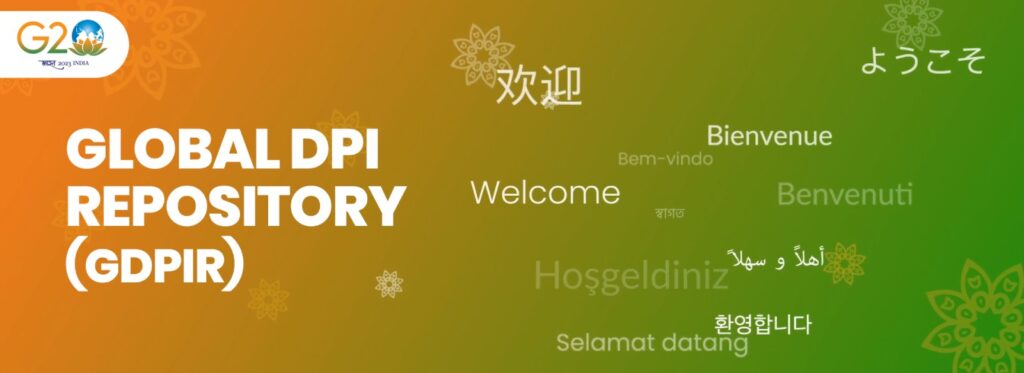Abhishek Singh is a seasoned civil servant and technocrat, serving as Additional Secretary at MeitY (Ministry of Electronics and Information Technology), while simultaneously holding pivotal roles as President & CEO at NeGD (National e-Governance Division), MD & CEO at Digital India Corporation, and CEO of Karmayogi Bharat under the Government of India. With an illustrious career spanning over two decades, he brings a wealth of experience in administration, law enforcement, policy formulation, and technology-driven governance.
Graduating from IIT Kanpur with a B.Tech and M.Tech, Abhishek further honed his skills with a Masters in Public Administration from Harvard Kennedy School of Government. His extensive fieldwork in states like Nagaland and Uttar Pradesh has equipped him with a deep understanding of grassroots-level development, from infrastructure projects to disaster management.
Having spearheaded various initiatives ranging from MyGov to coordinating with international agencies, Abhishek’s leadership is characterized by innovation, efficiency, and a relentless commitment to inclusive development.
In a distinctive interaction with The Interview World, Abhishek Singh delves into the intricacies of numerous government schemes and programs, emphasizing their accessibility to citizens. He underscores the global recognition garnered by the Digital Public Infrastructure program. Here are the pivotal takeaways from his illuminating discussion.
Q: What strategies or resources can individuals employ to effectively navigate the multitude of schemes and programs available to Indian citizens, ensuring alignment with their specific socioeconomic profile?
A: Navigating government digital programs can be a daunting task for beneficiaries who often find themselves unsure of which portal to visit or which app to download. Recognizing this challenge, we have developed myScheme, a groundbreaking initiative aimed at simplifying access to government schemes. With myScheme, users no longer need to grapple with the complexities of multiple platforms. Instead, they can effortlessly input their demographic and socioeconomic details, such as state, age, and gender. In response, the system generates a personalized menu of relevant schemes, tailored specifically to their needs.
This streamlined approach not only facilitates scheme discovery but also expedites the application and tracking processes. By eliminating unnecessary barriers, myScheme empowers individuals to easily access the support they are entitled to, ultimately fostering greater inclusivity and efficiency in government service delivery.
Q: How can citizens who are not digital natives access digital services effectively?
A: Recognizing the significant challenges faced by citizens who are not digitally savvy in navigating apps and websites, our government has undertaken a transformative initiative: the integration of Bhashini. Bhashini, an advanced AI program, is being seamlessly incorporated into e-governance systems. Its primary objective is to democratize access to government services by offering them in all Indian languages, with a particular emphasis on voice-enabled features.
This means that individuals can interact with government services using voice commands, similar to how they would interact with popular virtual assistants like Alexa. For instance, through the Umang app, users can simply ask, “Hey Umang, I live in Bihar, what services can I avail?” Within moments, they will receive a spoken response in their native language. Furthermore, Bhashini ensures that all services accessible through an individual’s profile are presented in their preferred language, thereby fostering inclusivity and enhancing user experience across the digital landscape.
Q: What are the key objectives and progress milestones of your leading project, Karmayogi Bharat?
A: In Karmayogi Bharat, our primary endeavor is the creation of an open-source technological platform designed specifically for the training and capacity building of government servants throughout the nation. Launched just a year ago, this platform has already seen remarkable success, boasting an impressive 30 lakh users and facilitating the completion of 50 lakh courses within this short timeframe. By leveraging the capabilities of this platform, akin to the widely acclaimed Diksha open-source platform, our objective is to instigate a transformative shift in the operational dynamics of civil services.
This paradigm shift will not only prioritize citizen-centric approaches but also ensure that the functions of civil services are finely attuned to the evolving needs and aspirations of the New India we envision. I am deeply invested in this initiative, as it constitutes a crucial component of my overarching schemes aimed at fostering progress and development across the nation.
Q: What are the key components and objectives of the government’s Digital Public Infrastructure mission?
A: A robust Digital Public Infrastructure (DPI), consisting of distinct components such as digital identification, a payments system, and a data exchange layer, holds immense potential for catalyzing economic transformation and fostering inclusive growth. India’s pioneering DPI framework, popularly known as India Stack, has emerged as a cornerstone in driving innovation and fostering healthy competition within its digital landscape. Notably, India Stack’s multifaceted contributions span across various sectors, from expanding market opportunities to bridging significant gaps in financial inclusion.
Moreover, it has significantly optimized government revenue collection processes and enhanced the efficiency of public expenditure. As countries worldwide navigate their digital transformation journeys, India’s experience with DPI stands as a beacon of guidance. Emphasizing shared foundational components and fostering an environment conducive to innovation across the digital ecosystem emerges as a pivotal strategy for designing effective DPI frameworks globally. In essence, India’s DPI journey underscores the critical role of cohesive digital infrastructure in advancing societal progress and economic prosperity.
Q: What are the reactions to the implementation of the Digital Public Infrastructure program or Global DPI Repository on a global scale?
A: Numerous nations are eager to glean insights from India’s Digital Public Infrastructure (DPI) narrative and its digital transformation journey, seeking avenues for replication. Consequently, a significant outcome of the leadership summit within the G20 last September was the establishment of a global DPI repository spearheaded by India. This initiative has culminated in the creation of the Global DPI Repository portal, cataloging approximately 55 DPIs from around 16 countries, with India prominently contributing to this repository.
Among the 45 countries engaged in scrutinizing the available DPI offerings, the focus lies on identifying suitable options and devising tailored pathways for adoption based on their unique contexts. In a notable development, our Prime Minister announced the allocation of $25 million towards a social impact fund during the G20 virtual meeting in November, with India matching this contribution. This fund is earmarked for promoting DPI adoption worldwide, with both the Ministry of External Affairs and the Ministry of Electronics and Information Technology actively charting out implementation strategies for partner countries.
Over the past year, India has forged Memorandums of Understanding (MOUs) with nine nations, currently collaborating on formulating adoption roadmaps for their respective DPIs. Notably, several countries have expressed interest in specific Indian DPIs, such as France’s fascination with UPI, illustrated by visitors scanning UPI codes at landmarks like the Eiffel Tower. Similarly, nations like the Philippines and Morocco are integrating Aadhaar into their systems. Countries like Sri Lanka have signaled interest in DigiLocker, among others like Diksha. The emerging trend suggests an increasing global embrace of Indian digital transformation, emphasizing the imperative to extend digital empowerment to a broader populace over the next three to five years.



